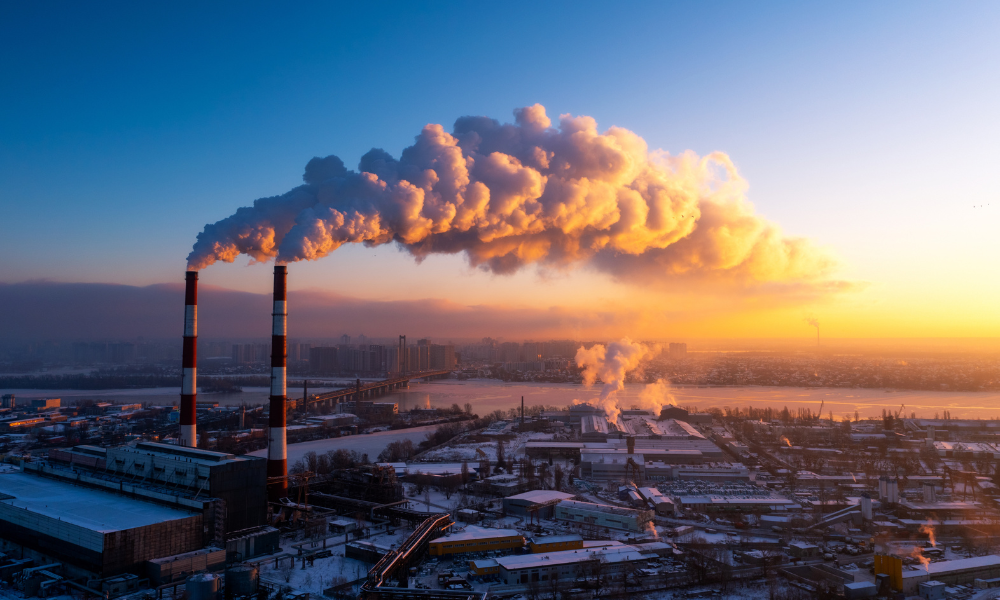New regulations target 35% emissions cut by 2030, raising concerns over potential production

The Canadian government introduced draft regulations on Monday to set an emissions cap for the oil and gas sector, targeting a reduction of 35 percent below 2019 levels by 2030.
According to Reuters, this proposal has drawn strong opposition from the industry, which claims the cap would force production cuts.
Oil and gas remain Canada's largest source of emissions, which continue to climb despite reductions in other sectors.
The government has committed to reducing overall emissions by 40-45 percent from 2005 levels by 2030, a goal that Ottawa may struggle to meet unless the oil and gas industry escalates its decarbonization efforts.
Federal Environment Minister Steven Guilbeault emphasized the sector's substantial profits, which totalled $66.6bn in 2022, and stated that the government aims to encourage investment of those profits in reducing emissions.
Guilbeault asserted, “This goes after pollution, not production,” adding that the government developed the regulations to reflect what is technically achievable, while holding the industry accountable to its commitment to reach carbon neutrality by 2050.
Currently, Canada is the world’s fourth-largest oil producer and sixth-largest natural gas producer.
The government projects that even with the cap in place, oil and gas production will grow by 16 percent from 2019 levels by the period of 2030-2032.
The economic impact is estimated to reduce Canadian GDP by only 0.1 percent. The new regulations will implement a cap-and-trade system that rewards companies with lower emissions while pushing higher-polluting firms to improve their processes.
Producers will start reporting emissions from 2026, with the initial three-year compliance period beginning in 2030. Non-compliance penalties are currently under development.
Federal Natural Resources Minister Jonathan Wilkinson explained that the bulk of emissions reductions will likely come from cutting methane emissions and developing a carbon capture project for the oil sands.
Wilkinson noted that the government initially sought a 38 percent reduction in emissions but revised the target to 35 percent after extensive consultations to establish what is feasible for the sector.
“If you start to go beyond what is achievable, you are moving this from an emissions cap to a production cap,” he stated in an interview with Reuters.
The policy arrives ahead of a federal election expected within the next year, with polls indicating a potential loss for Prime Minister Justin Trudeau’s Liberal government to the opposition Conservatives, led by Pierre Poilievre.
The Conservatives criticized the cap as an attack on the energy sector, especially during a period of slow economic growth, and stated that they would eliminate the policy if they came into power.
In a statement, they claimed, “Trudeau plans to crush the energy sector, putting hundreds of thousands of jobs at risk at the worst possible time.”
Industry groups also voiced concerns.
The Canadian Association of Petroleum Producers warned that the cap would likely deter investment in Canadian oil and natural gas projects, and Alberta, the country’s primary fossil fuel-producing province, argued that the cap could cut production by one million barrels per day by 2030.
TC Energy CEO Francois Poirier stated that an emissions cap would effectively restrict domestic natural gas production, potentially increasing energy costs for Canadian families and businesses.
While industry stakeholders criticized the proposal, climate advocates expressed support, with some calling for stricter measures.
Environmental Defence, an advocacy group, urged the government to tighten the timeline, arguing that the rules should align with Canada’s broader climate goal of a 40-45 percent emissions reduction by 2030.
They also advocated for closing a perceived loophole that permits companies to offset up to 20 percent of their emissions through contributions to a decarbonization program or by purchasing greenhouse gas credits.
The consultation period for the draft regulations begins on November 9 and will close on January 8, with the final version scheduled for publication in 2025.



